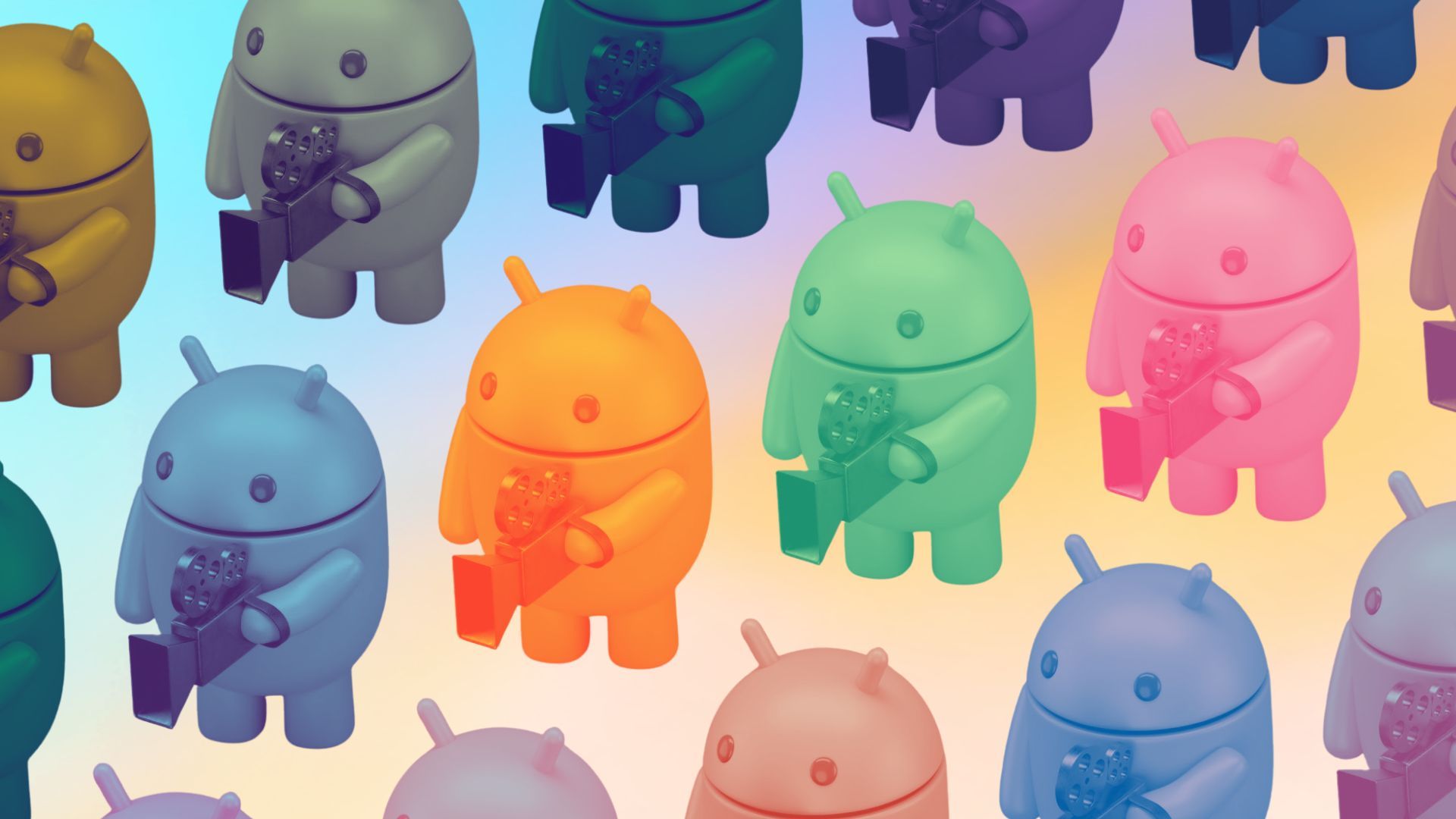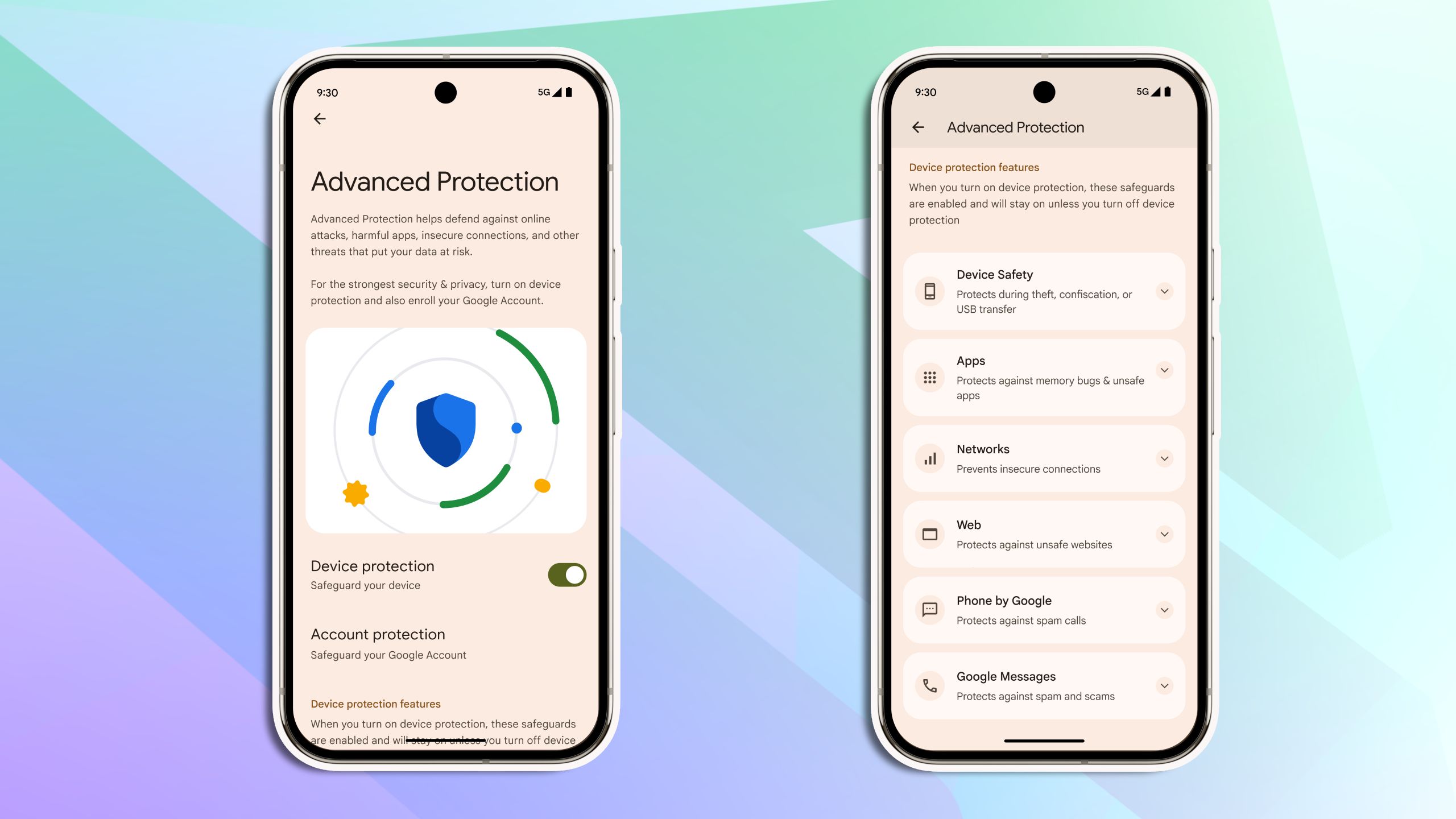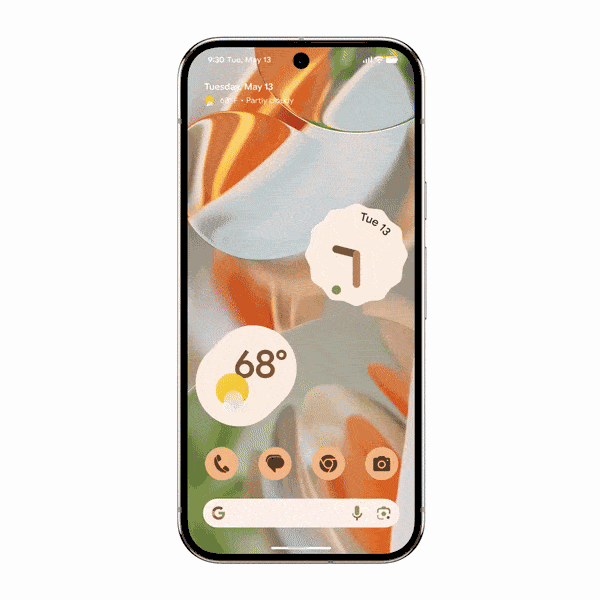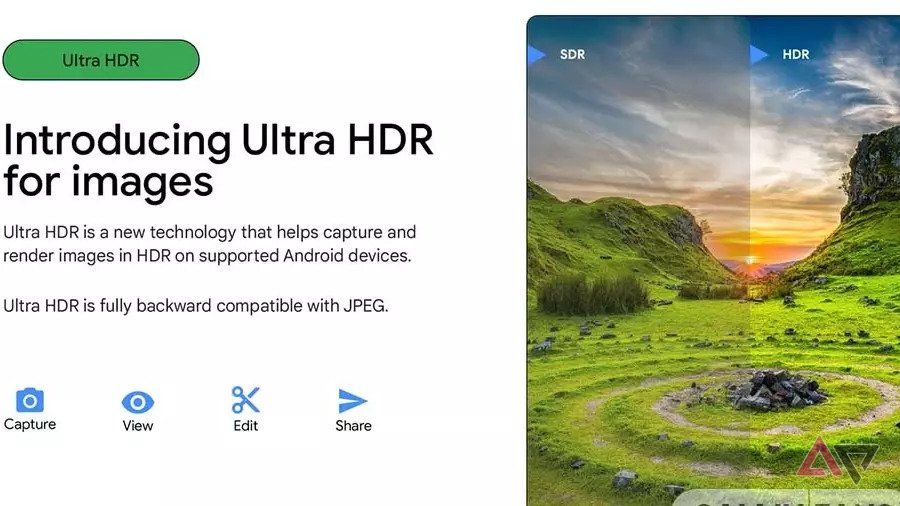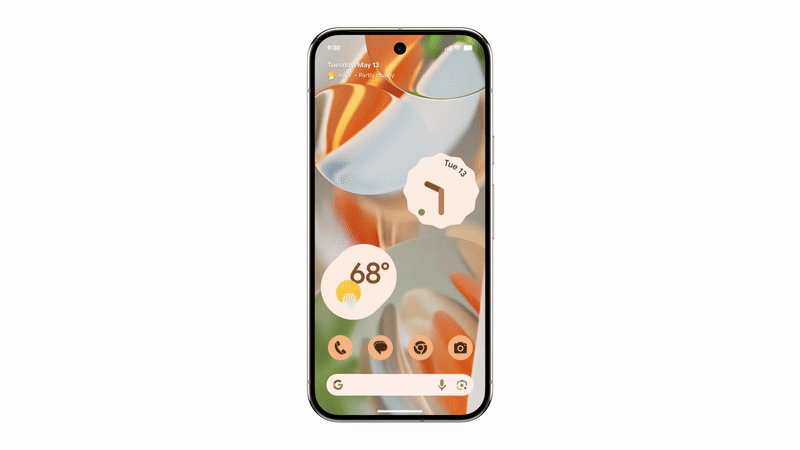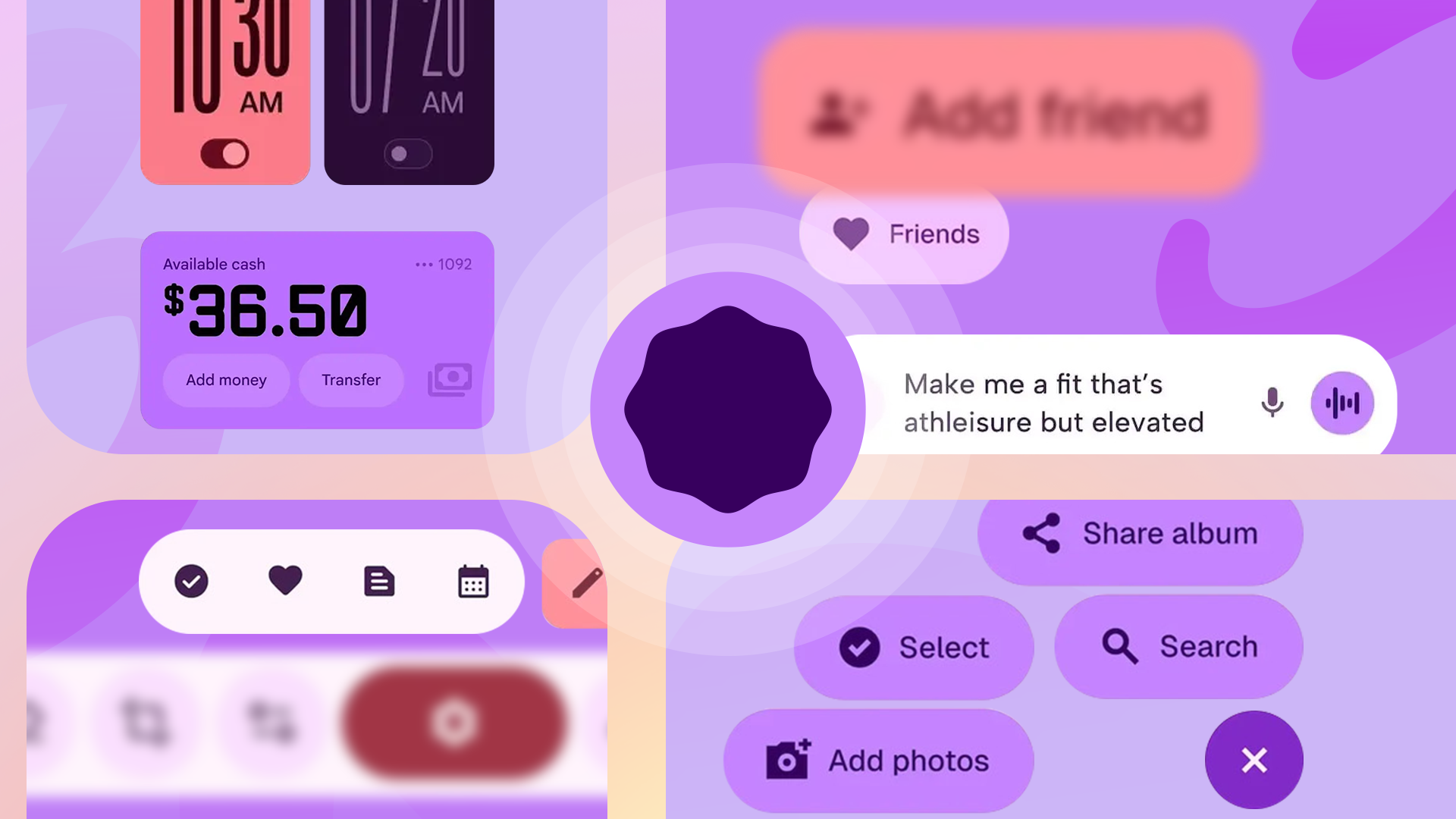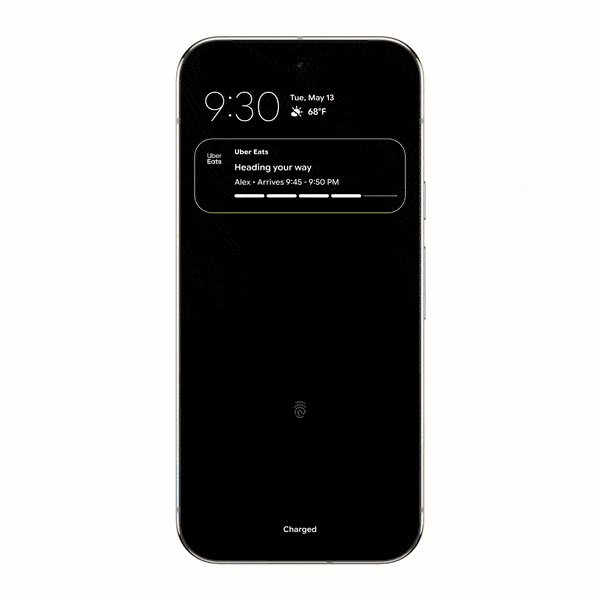Google took the fun out of Android updates. It barely introduced any noticeable changes that would make me get excited. Android 16 was shaping up to be a relatively boring upgrade until Google unveiled its features at The Android Show: I/O Edition on May 13.
With Material 3 Expressive, a revamped Quick Settings panel, and Live Updates, Android 16 brings many features I’m excited to try on my Android phone. It feels like one of the most significant Android upgrades in years.
5
Advanced Protection mode
Consolidating all security features
Over the last few years, Google has added several features to Android to bolster its security. Still, there’s room for improvement. Plus, I feel Android’s security features are lacking compared to the iPhone.
With Android 16, Google is taking a big step to remedy this. A new Advanced Protection mode will bring major security-related settings under one section. So, you won’t have to dive deep into your phone’s settings menu to enable Theft Detection or offline device finding.
With a single Advanced Protection toggle, you can enable all available security measures in Android across several categories. The list is as follows:
- Intrusion Logging
- Theft Detection Lock
- Offline Device Lock
- Inactivity Reboot
- USB Protection
- Google Play Protect
- Unknown App Protection
- Memory Tagging Extension
- Android Safe Browsing
- Chrome Safe Browsing
- Javascript Protection
- Unsafe Link Protection
- Spam and Scam Protection (Google Messages)
- Spam and Scam Protection (Phone by Google)
- Called ID & Spam
- Automatic Call Screening
- 2G Network Protection
- Disable Auto-Reconnect to Insecure Networks
Many of these security features are scattered throughout the OS. For example, the Caller ID & Spam protection settings are in the Phone app settings, while the Google Play Protection option is under Security & Privacy.
Intrusion Logging is a new security feature in Android 16 that creates and maintains a device activity log for post-breach analysis. It’s end-to-end encrypted and stored in the cloud, ensuring it is safe yet easily accessible.
Inactivity Reboot is another new security feature in Android 16 that will automatically restart your Android phone if it stays locked and idle for 72 hours. This will ensure all user data remains unreadable until the device is unlocked by entering the PIN or password.
Advanced Protection Mode in Android 16 won’t benefit me much. I only enable such features while traveling. Still, it’s a welcome addition that will strengthen Android’s security.
While Advanced Protection will go live with Android 16’s initial release in June, many of its new features will go live later this year.
4
Revamped Quick Settings panel
An iOS 18-inspired change
It’s almost a ritual for Google to change the Quick Settings panel with every major Android release. Android 16 will continue that trend, and I am excited about the changes Google plans to make. It’s adding resizable toggles. Plus, one-click Wi-Fi and Bluetooth toggles are making a comeback.
The other noticeable change is a new look for the tiles, so they occupy less space than before. As seen on some Chinese Android skins, expanding the Quick Settings panel will blur the background to add a depth effect.
It feels like Google has taken inspiration from iOS 18’s revamped Control Center for Android 16’s Quick Settings panel. It appears to be a big usability improvement.
The revamped Quick Settings panel in Android 16 will not be a part of the OS’ June release. Instead, it will arrive later in the year.
3
Ultra HDR support for HEIC images
Bringing richer colors and details to a new image format
I take a lot of pictures with my phone. Given that JPEGs take a lot of space, I set the camera app on my phone to save them in the space-efficient HEIC format. The catch is that Android doesn’t support Ultra HDR for photos saved in the HEIC format. So, I take pictures in JPEG, which eats into my 2TB Google One storage.
Android 16 will change this by adding Ultra HDR support for HEIC images. Google is also working on UltraHDR support for AVIF images, and that will arrive in the future.
Google introduced Ultra HDR with Android 14. It allows pictures to have higher dynamic range and enhanced color. It delivers these improvements with no compatibility issues. Ultra HDR JPEG images automatically fall back to the SDR gain map on devices with SDR displays. With Android 15, Google made Ultra HDR support mandatory for phones with performance class 15.
With Android 16 bringing Ultra HDR support to HEIC images, let’s hope Google also updates the Pixel Camera app to allow saving photos in HEIC by default instead of JPEG.
2
Material 3 Expressive
A bold and colorful look
Android 16 marks the debut of Material 3 Expressive, Google’s new design language for phones and tablets. It is also one of the biggest user-facing changes in the OS. It does not bring a big visual overhaul. Instead, it builds on Material Design 3 to add bouncy and slick animations, bigger buttons, bolder fonts, and more.
Material 3 Expressive comes at the right time. Google debuted Material Design 3 with Android 13 four years ago, so the current design felt stale. Plus, it brings the correct improvements while keeping the familiarity intact. Instead of going ga-ga over Material 3 Expressive, I will let this GIF from Google do the talking:
See the springy new animation with larger touch points for the most commonly used options? Here’s how Google explains the Material 3 Expressive design changes in the notification panel: “For example, when you dismiss a notification, the others next to it subtly respond to your drag. And when you snap it off the stack, you feel a satisfying haptic rumble.”
You will find this polish throughout Android 16, with slick animations and haptic feedback, including when dismissing apps from the recent apps screen or changing the system volume. Along with Material 3 Expressive, Android 16 will update the dynamic color themes, so apps will pull more colors from your wallpaper.
From what Google has shown, Material 3 Expressive looks good, and it’s one of the major Android 16 features that I am most excited about. The only bummer? Material 3 Expressive won’t be a part of Android 16’s initial public release in June. Instead, it will arrive later in the year.
1
Live Updates
Taking the headache out of keeping up with real-time notifications
Food delivery apps have become a part of our lives. Unlike other apps, food delivery apps like Uber and Grubhub deliver urgent and real-time notifications. It’s the same with sports apps. You want real-time updates in your phone’s notification shade, instead of opening the app for this.
While Android’s notification panel is more powerful than iOS’s, it struggles to deliver live updates effectively. Apple nailed this with Live Activities, making it effortless to track sports scores and food delivery status in real time.
Google is taking inspiration from iOS and introducing a similar feature in Android 16: Live Updates. It will provide real-time tracking of your food delivery status on your phone’s lock screen or in the notification shade. The status appears when you use Always-On Display. Google’s implementation also adds useful Call, Message, and Tip buttons to the Live Update notification.
I constantly open the food delivery app to check its status, which is annoying and a waste of time. Android manufacturers like OnePlus and Oppo added a feature similar to the iPhone’s Live Activities to their skins, but the implementation is buggy and is not reliable. An official solution from Google should take care of these issues.
You’ll have to wait to try Android 16 in all its glory
While Android 16 is a feature-packed release, it needs some long-awaited features and won’t launch with all the new goodies in June. Instead, Google will release bigger changes later in the year, presumably alongside the Pixel 10 family and a Quarterly Platform Release. Plus, non-Pixel phones might miss out on some changes as the device manufacturer may decide not to implement them in their skin.


